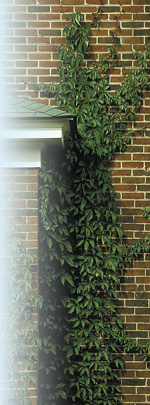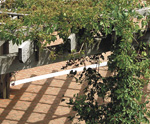Virginia Creeper Is in the Ivy League
go.ncsu.edu/readext?236038
en Español / em Português
El inglés es el idioma de control de esta página. En la medida en que haya algún conflicto entre la traducción al inglés y la traducción, el inglés prevalece.
Al hacer clic en el enlace de traducción se activa un servicio de traducción gratuito para convertir la página al español. Al igual que con cualquier traducción por Internet, la conversión no es sensible al contexto y puede que no traduzca el texto en su significado original. NC State Extension no garantiza la exactitud del texto traducido. Por favor, tenga en cuenta que algunas aplicaciones y/o servicios pueden no funcionar como se espera cuando se traducen.
Português
Inglês é o idioma de controle desta página. Na medida que haja algum conflito entre o texto original em Inglês e a tradução, o Inglês prevalece.
Ao clicar no link de tradução, um serviço gratuito de tradução será ativado para converter a página para o Português. Como em qualquer tradução pela internet, a conversão não é sensivel ao contexto e pode não ocorrer a tradução para o significado orginal. O serviço de Extensão da Carolina do Norte (NC State Extension) não garante a exatidão do texto traduzido. Por favor, observe que algumas funções ou serviços podem não funcionar como esperado após a tradução.
English
English is the controlling language of this page. To the extent there is any conflict between the English text and the translation, English controls.
Clicking on the translation link activates a free translation service to convert the page to Spanish. As with any Internet translation, the conversion is not context-sensitive and may not translate the text to its original meaning. NC State Extension does not guarantee the accuracy of the translated text. Please note that some applications and/or services may not function as expected when translated.
Collapse ▲
Parthenocissus quinquefolia
Photo by Robert E. Lyons
When it comes to a fast-growing vine to cover an arbor or trellis, Virginia creeper, Parthenocissus quinquefolia, just might fit the bill. Many gardeners are turning away from traditional vines like Chinese wisteria and English ivy due to their tendency to invade natural areas. Virginia creeper, a North Carolina native, is a worthy alternative.
With its rapid growth rate, Virginia creeper can quickly cover a trellis. It would be equally happy climbing a fence, which would make a nice backdrop for a perennial border. The large leaves are deeply lobed into five leaflets, adding a nice texture to the garden. Although the flowers are inconspicuous, the foliage of this deciduous vine turns a wonderful shade of burgundy prior to fall leaf drop. The blue-black berries also add a nice touch to the autumn landscape. Keep in mind that the berries are very poisonous to humans, but will be thoroughly enjoyed by the neighborhood birds. For best growth, plant in good soil in full sun to part shade.
Like English ivy, Virginia creeper also can serve as a groundcover. Regular trimming will be required to keep this fast-growing plant from invading adjacent areas. Though it will look great climbing an arbor, keep this and most other vines off of trees and houses. The vines add excess weight to limbs during winter ice storms, and the climbing tendrils can damage the siding and paint on your house.

Parthenocissus quinquefolia
Photo by Robert E. Lyons
The Oriental version of this vine,Parthenocissus tricuspidata, or Boston ivy, is the trademark plant of the Ivy League universities. Virginia creeper may not be a show-stopper, but this versatile and durable vine can certainly serve as one of the backbone plants of your landscape. Consider one of the green and white variegated varieties such as ‘Star Showers” or ‘Variegata’.
See the variety of species in the genus at the JC Raulston Arboretum in Raleigh. In addition to the curiously variegated Virginia creeper in the Klein-Pringle White Garden, the glowing, yellow-green ‘Fenway Park’ version of P. tricuspidata is making quick work of a concrete column that supports the McSwain Center.
Paul McKenzie


